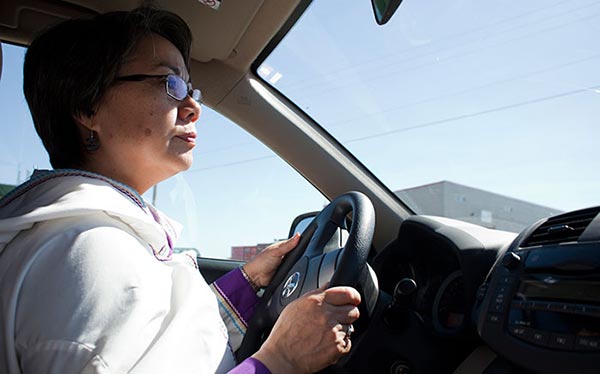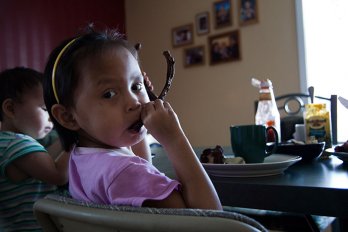One day. Eva Aariak, the second premier of Nunavut, is in Nuuk, Greenland, attending the quadrennial Inuit Circumpolar Council meeting, where delegates are discussing the European sealskin ban, the lure and threat of Arctic oil exploration, and how to make the Inuit healthy again—all worthy considerations—but Aariak is preoccupied. She has only one day between this conference and a trip to the eastern shore of James Bay to relinquish ownership of a string of islands to the Quebec Cree, and she’s been invited to spend that day in Toronto with the Queen. The thing is, she has a hunch about a birth.
The solution may seem obvious: put on a smile, go to the Royal York hotel, and foster alliances with power brokers. But a child is only born once, so instead she stops in Iqaluit to unpack and repack, and, as if surrendering to her mother’s will, Aariak’s daughter Karliin goes into labour on July 5, the one day, delivering Aariak’s third and very overdue grandchild. The boy was named after Aariak’s father, who died in 1985 but returns with this birth.
Family ties reinforced, the premier hops on a plane bound for Chisasibi, Quebec, to sign land claim documents and square-dance with handsome Cree chief Matthew Coon Come before returning to Iqaluit with a debilitating cold; still, she is unperturbed. Baby James Aliguq, now five days old, lies swaddled on her couch. We’re having tea in her modern, open concept home. Plentiful windows give air and light to Inuit prints, sculptures, and artifacts. Against one wall, a bookshelf brimming with snapshots, and against another an upright piano—the first I’ve seen in a Nunavut home. Aariak shows me a pencil drawing of her father, Aliguq Joseph. He’s deeply tanned and wearing a homemade parka. Very Nanook of the North.
For twenty-seven years, Aliguq was a general labourer for the Hudson’s Bay Company in Arctic Bay, where Aariak grew up, a tiny smattering of residents surrounded by hills on the teeming shores of Admiralty Inlet in North Baffin Island—just down the road from Nanisivik, where Ottawa plans to build a navy port. A chain smoker who didn’t speak English, he was quiet, dependable. I’m picturing him having tea with us when, suddenly, James Aliguq starts crying, which is spooky. Maybe Aariak’s dad is trying to tell her something. Maybe “You should have had dinner with the Queen,” or “Stop talking about me and tell this qallunaat about yourself.”
There is plenty to tell. She’s only the fifth woman ever to lead a provincial or territorial government in Canada, and was, on her election to the nineteen-seat Nunavut Legislative Assembly in October 2008, its sole female MLA (a by-election has since brought in a second). A photo of that group hanging outside her office features a fraternity of suits and sealskins with Aariak seated in the middle, looking like a mascot in business casual. But Aariak is not captain by fluke. In accordance with the non-partisan, consensus-style system, MLAs held a leadership forum soon after the election and voted for the premiership by secret ballot. In other words, the boys chose her to lead.
While she might be an oddity in the legislature, Aariak appears to be on the crest of a budding estrogen wave that could alter the territory’s political agenda. The commissioner of Nunavut (akin to lieutenant-governor) and the languages commissioner are both women. Leona Aglukkaq, the federal health minister, is Nunavut’s Member of Parliament, replacing Nancy Karetak-Lindell. Cultural activist Sheila Watt-Cloutier was honoured with a Nobel Peace Prize nomination in 2007 for focusing attention on the warming North, while Mary Simon represents the 50,000 Inuit in Canada as head of Inuit Tapiriit Kanatami. Okalik Eegeesiak is president of the Qikiqtani Inuit Association, the largest of three regional bodies that administer Nunavut’s $1.1 billion land claim from Iqaluit. And, speaking of Nunavut’s capital and largest city, Elisapee Sheutiapik has been its mayor since 2003.
Meanwhile, more girls than boys are graduating from high school, and they are ambitious. A full seventy-nine of 104 youths who have participated in the Ottawa-based leadership program Nunavut Sivuniksavut since 2005 have been female. Of Nunavut’s first batch of lawyers who graduated from the University of Victoria–affiliated Akitsiraq Law School, ten of eleven were women. In 2008, nearly 60 percent of Nunavut’s public servants were female, a figure that’s likely higher today.
It’s not that Inuit women are taking over or even want to. They’re just joining men in the seat of power. And one day, in the midst of a burdensome political schedule, they might choose motherhood over Mother Britannia, the future over the past. This is not such a bad thing.
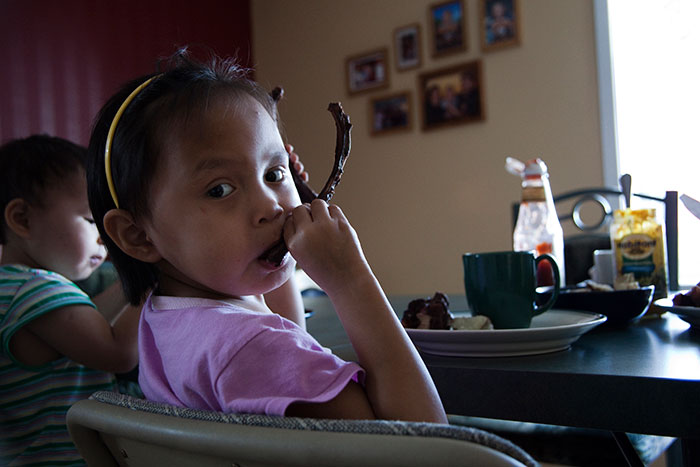
Nakinngaaqpit? (Where are you coming from?)
Eva Aariak is five-foot-one, with a short, sensible haircut and several pairs of flat-soled black leather shoes, also sensible, on a rack by her front door. She is fifty-five.
She doesn’t smoke cigarettes. Never has.
She has a high school equivalency diploma and various post-secondary certificates in teaching and business management.
Her biological father is a Scottish bagpiper and a former art buyer for Canadian Arctic Producers. His name is Eric Mitchell. She didn’t grow up with him but, as an adult, has nurtured their relationship.
As a child, she ate a lot of stewed rabbit and attended Anglican church. She doesn’t indulge in either anymore.
Her brother-in-law committed suicide.
Her mother had tuberculosis—twice.
She is a divorced single mother of three grown children and one teenage son, Jari, who lives at home and plays guitar and piano, and whose biological mother, Aariak’s sister, died of an aneurysm during childbirth. Jari is named after an older brother who was killed in an accidental shooting by another brother, when a loaded rifle was left unsecured following a hunting trip.
She can whistle like a sandpiper.
She wonders if other premiers hem their children’s pants.
The last book she read was Eat, Pray, Love, by Elizabeth Gilbert.
She was once head of the Baffin Regional Chamber of Commerce.
Before becoming premier, she owned and operated a high-end Inuit arts and crafts store in Iqaluit.
Her daughter Karliin, a fashion designer, represented Canada this year at the annual international fur and leather exhibition in Milan, with a sumptuous Audrey Hepburn–style seal jacket. Karliin is married to Jamal Shirley, whose grandfather, Jimmy Shirley, played guitar for Ella Fitzgerald.
Aariak is well travelled: she liked Copenhagen for the architecture, Cuba for the political history, Scotland for the castles, and Hawaii for the exotic seclusion.
She drives a khaki Toyota Rav 4 with the word “taxi” finger-drawn through the dust on the driver’s door.
She’s not a big fan of seat belts or bugs.
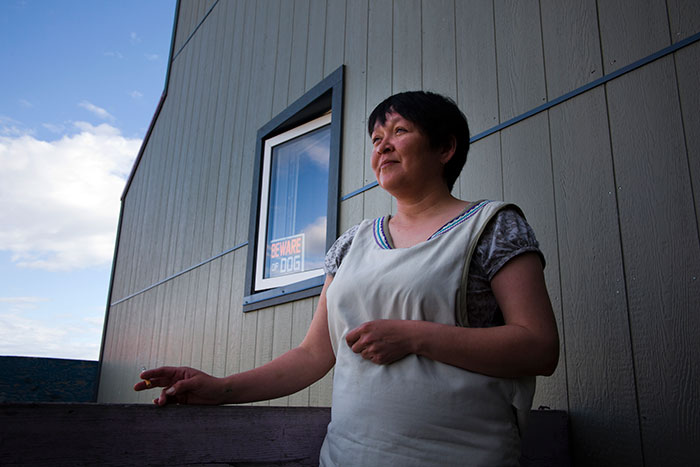
Inuktituusuunguvit? (Do you speak Inuktitut?)
It’s 9 a.m. on Nunavut Day, the July 9 holiday marking the proclamation of the Nunavut Land Claim Act in 1993 and the subsequent creation of Canada’s third territory. Before Nunavut, young, disempowered Inuit spent years starting their sentences with “One day . . .” Some still do.
In a few hours, Aariak and hundreds of others will attend a large celebration with seal-skinning contests and muskox burgers in the legislature parking lot, but right now, in the lobby of CBC’s Iqaluit headquarters, there’s only awkward silence. Aariak and Baffin land claim president Okalik Eegeesiak had been asked to chat briefly about today’s event schedule, but host Abraham Tagalik now says he wants to talk about the meaning of this historic day, and he’s asking for an hour of their time. Eegeesiak furrows her brow and tucks in her chin. Aariak opens her eyes wide, bites her lip, looks away. Tagalik smiles broadly, threads his fingers. Inuit can speak volumes without saying a word. It’s a standoff. Aariak’s press secretary, Emily Woods, fills the gap: that’s not what they agreed to, she says, and anyway an hour is far too long. Aariak coughs and rifles through her purse for a lozenge.
After some cajoling, the women agree to wing it, though it’s unclear when they step into the studio just what they’ll be talking about and for how long. It’s a hell of a risk for a political leader. I try to imagine Ontario premier Dalton McGuinty agreeing to a spontaneous, open-ended, province-wide radio interview. I can’t. “Just put the headphones on and speak into the mike,” Tagalik instructs as they take their seats around the table.
Aariak knows the ropes. She once worked in this very building, as a CBC host and reporter. At the 1994 Arctic Winter Games in Slave Lake, Alberta, she and Archie Angnakak were dubbed the “Cool Runners” because they usually nailed their TV stand-ups in one take. She’s a cool runner still, smiling and conversational, acknowledging the hard work of land claim negotiators in the 1970s and ’80s and the importance of honouring their sacrifice by preserving Inuit culture and creating a sustainable, modern economy. “Within the past eleven years, we have done so much, but we still have a long way to go,” she says. On so many levels: Nunavut is woefully underfunded and underdeveloped, especially when it comes to basics such as roads, ports, and railways. Aariak has taken repeated shots at Ottawa for the North-South inequity, wondering if northern-sovereignty rhetoric might one day translate into improved quality of life here. “That’s what we are fighting for right now,” she says, “to complete the map of Canada by having the same kind of resources and infrastructure that everyone else in Canada enjoys.”
After twenty-five minutes, it’s news time. In the hallway, Tagalik asks them to stay for another half-hour, and in the brief pause before the anticipated no, he says the magic words: “This part will be in Inuktitut.” Aariak has spent most of her life teaching, interpreting, and promoting the traditional Inuit language. She helped write an Inuktitut version of the Microsoft Windows operating system by choosing and inventing thousands of complicated computer terms. (Ikiaqqijuq, for example, means “travelling through layers and time,” a reference to what Inuit shamans did to spy on remote locations. Now ikiaqqijjut means “internet.”) She was Nunavut’s first languages commissioner, from 1999 to 2005, and helped draft the Official Languages Act and the Inuit Language Protection Act. To say she is passionate about her first language is an understatement. “Okay,” she agrees casually, as if she had planned to stay all along.
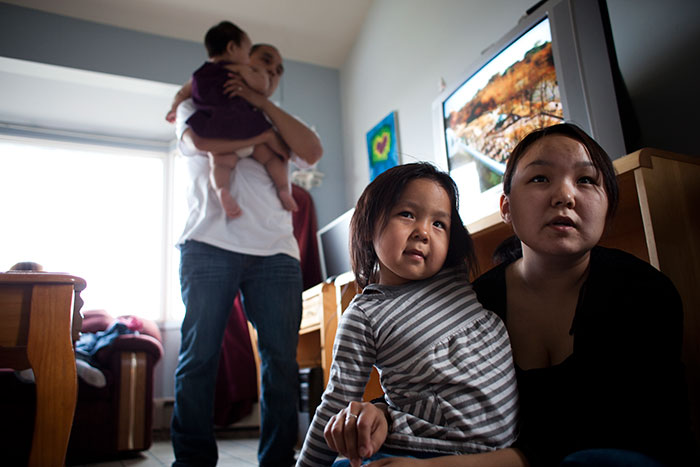
Inuuqanniqtualuk (She is easy to get along with)
Eva Aariak is a patient January Capricorn, born when people in my world were building rockets and people in her world were navigating frozen moonscapes with homemade qamutiik (sleds), when people from both our worlds were founding Frobisher Bay, now Iqaluit, so my people could encourage her people to stop wandering and start praying. Nunavut has been imagined, designed, negotiated, legislated, and commemorated, all within her lifetime.
She says she takes after her mother, Kautaq, who died four years ago. This actually explains a lot. Kautaq was in some ways typical of Inuit women from that era: active in community affairs and possessing a stoic, show-not-tell attitude toward parenting her seven children. But, in other ways, she was an enigma. She could speak English, thanks to prolonged stays at tuberculosis sanatoriums in Hamilton and Toronto, and she had a paying job, as translator at the Arctic Bay nursing station, where she worked for fifteen years. She didn’t recognize gender barriers. When men would visit their house after a hunting trip, Aariak’s father, Aliguq, would say little. “My mother would just jump in and carry on the conversation,” Aariak says. “That was not common for women at the time. She would pick up a hammer and start framing a new porch, and then my dad would come to help. Nothing would stop her.” Kautaq, incidentally, means “hammer” in Inuktitut.
Eva Aariak, then Eva Joseph, was among the first wave of Inuit children to earn a Western education. While some of her peers suffered abuse at church-run residential schools, Aariak’s attendance at a vocational school in Fort Churchill, Manitoba, was positive. She studied the usual subjects, along with home economics and office skills, and later completed high school in Ottawa, where she lived with a family she is still close with today. She began a food and fashion program at Kemptville College, south of Ottawa, but returned north before finishing to marry, start a family, and try on job after job to see which one fit: teacher, home management educator, children’s book coordinator, government equal employment officer, journalist, public affairs manager, translator. Many of these were in Iqaluit, a tiny city served by three levels of government, land claims bodies, and countless boards, agencies, and organizations, all hungry for educated, bilingual, reliable Inuit staff. People like Aariak. But, in 2006, she switched gears and opened her own store, Malikkaat, which sells local jewellery, clothing, and art. About the only job she never held—before becoming premier—was politician. She had considered running for office for years, but family came first.
Aariak’s oldest children—Karliin, Shawn, and Jordan—seem to have benefited from their mother’s commitment. They are employed, healthy, paired up, and starting to produce grandchildren. It’s a poster family for success, which just goes to show not everyone here fails, blames, drinks, fights, and goes to jail. Some do, of course. While I’m in Iqaluit, the weekly Nunatsiaq News, where I once worked, runs a routine crime story under the subhead “Man stabs sister’s common-law husband, takes bath, passes out.” It sounds funny until you read the pitiful details.
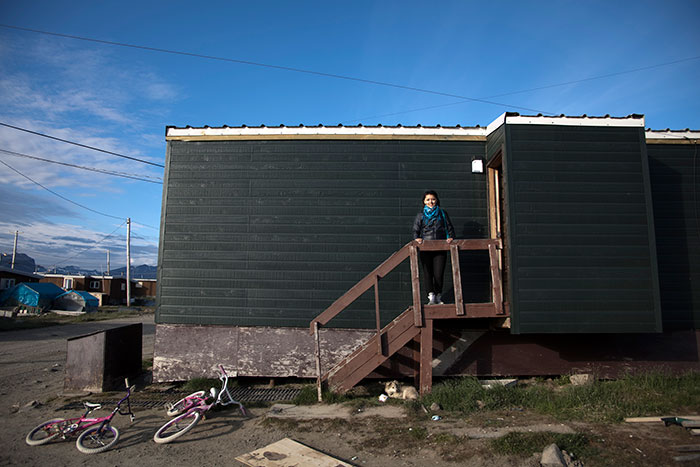
Mattutissaqaqpit? (Do you have a Band-Aid?)
When outsiders look at Nunavut, here’s what they see: armed standoffs, a money pit, skinny polar bears. Other than quirky survival sagas and political junkets, typical northern content in southern media outlets is bloody depressing. But numbers are hard to ignore. The unemployment rate is 14.2 percent compared with 8 percent for Canada overall. Teen pregnancy is the highest in Canada; graduation rates are the lowest. Over half of Nunavut’s 33,000 residents smoke cigarettes, and more than one-third live in overcrowded housing. Violent crimes, including sexual assaults, are more common here than elsewhere in the country, and the average age of death is 47.8, compared with 74.2 for other Canadians.
Economic vulnerability augments a culture of dependency, something quite foreign to the Inuit. Of the territory’s $1.2 billion in anticipated expenditures for fiscal 2010–11, $1.67 billion will come from federal transfer payments. Like her predecessor, Aariak wants to hasten self-sufficiency by gaining province-like control over natural resources under a process called devolution. (Nunavut contains an estimated 10 percent of Canada’s remaining crude oil and 23 percent of its natural gas, not to mention pockets of gold, diamonds, copper, iron, and uranium.) But the latest public service report reveals that 22 percent of current government positions are vacant, and that Inuit are still significantly underrepresented in senior management—partly a function of those paltry graduation rates. Maybe Nunavut is not yet ready for more responsibility.
Even the cold climate—the one thing northerners could depend on—has become unreliable. Hunks of ice are calving off ancient shelves; annual sea ice is thinning and diminishing, thwarting the seals who den in the ice and the polar bears who hunt from it. No one yet knows the social, environmental, and security impacts of a navigable, ice-free Northwest Passage, and increased rain and melting permafrost are already starting to undermine existing infrastructure. It makes you wonder why the Inuit bothered creating Nunavut at all, or why they didn’t wait at least, as some leaders had urged. Yet, despite tsk-tsking from outsiders, there is an abiding conviction here: the only way is forward.
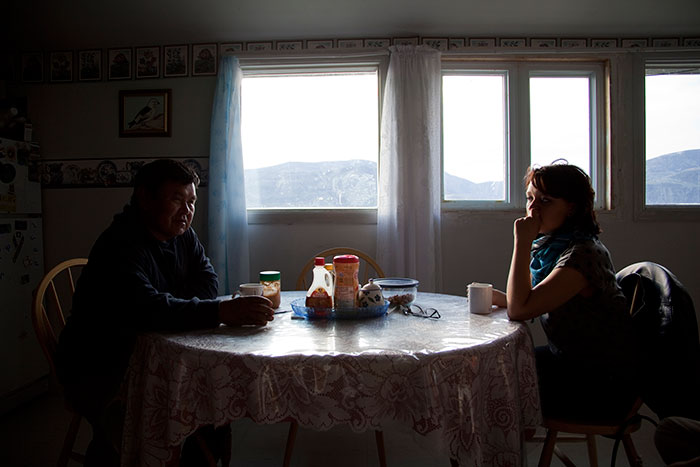
Iqqanaijariaqtunga (I go to work)
One day, when she was about nineteen and a member of the Arctic Bay Recreation Committee, Aariak introduced a motion to ban smoking in the public hall where children and others gathered. It was a long shot, since everyone smoked, but, amazingly, it passed. Something changed in the community after that, she said. People started smoking under the stove fan or in the furnace room. It was a revelation: one person could change anything—and maybe everything.
An experience like that could have ignited arrogant ambition. It didn’t. Aariak never loses her temper. She gets frustrated and anxious and even disappointed, but she has never pulled a Helena Guergis. She’s a calm diplomat with a quiet intensity, a team builder, and a sharp contrast to former premier Paul Okalik, who clearly had a challenging and overly scrutinized job as Nunavut’s first premier but who, by his second term, developed an autocratic swagger most Inuit find distasteful.
Like Okalik, she carries the weight of extraordinary expectation. Nunavummiut—the people of Nunavut—want relief from their myriad problems, and they’re impatient. If there’s any criticism of the premier (and there is little, outside of Paul Okalik’s ribbing in the legislature and some grumbling from non-Inuit about forthcoming Inuktitut language requirements), it’s that she is too calm. “Eva needs to get out and flex her muscles a little bit,” says Mary Simon, a friend and colleague. “The learning curve should be over now. She should get out and be assertive. I haven’t told her that yet, but I plan to.”
Among the gentle critics is Jack Hicks, a long-time northern provocateur and social research consultant, who believes Aariak and her cabinet should adopt a more progressive social agenda, as Greenland is doing under the left-wing, pro-independence, pro-oil leadership of Prime Minister Kuupik Kleist. Elected in 2009, he has made tackling social problems, such as alcoholism, domestic violence, and suicide, his priority. Of course, Greenland got a head start with home rule, from the Danes, twenty years before Nunavut did, and recent legislation gave Greenland’s 57,000 mostly Inuit residents more autonomy and greater resource revenues, something Nunavummiut can only dream about for now.
Meanwhile, Aariak whittles away at present problems and tries to carve out a better future. One of her first acts as premier was to hire former Yukon premier Piers McDonald, now a consultant, to ask her people what they thought government was doing wrong. That takes guts in a place where so much is going wrong. The process resulted in 2009’s Tamapta Action Plan, which promises comprehensive improvements by 2013, a hopeful mandate for a cash-poor territory. Bilingual government liaison officers are already being reinstituted in all twenty-six communities, and poverty reduction and housing strategies are in the works.
If Aariak fears anything, it’s demographics. Half of Nunavummiut are under twenty-five, while the birth rate is through the roof—that’s a lot of people to support in the coming years. Education, she says, is the key. To that end, Nunavut just passed a new education act, which emphasizes Inuktitut-English bilingualism, improved academic standards, more Inuit cultural history in the curriculum, and community control. An educated Inuk is more likely to have a job and solve his own problems, she says. It may seem cruel to imagine future strengths when there are current weaknesses (“Seven-year-olds don’t fail grade two,” Hicks says; “their parents do”), but Aariak knows fundamental social change can take decades, especially in a population still overcoming the impacts of rapid assimilation. If you plan for the future, the present will eventually change. One day.
You don’t hear many politicians espousing “long-term visions” anymore. It doesn’t get them reelected. In this respect, Nunavut is unique in Canada. While other premiers just have to stay afloat between elections, Nunavut premiers have to build the boat. Then the boat has to go somewhere—hopefully powered by a sustainable source of energy—without leaving anyone behind.
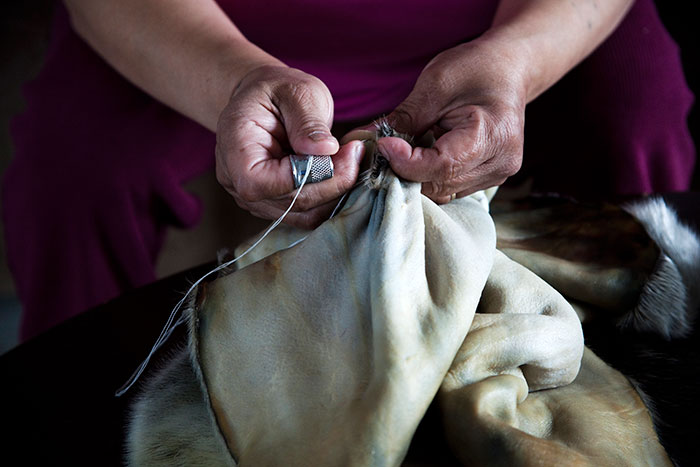
Aqukainnarilli (You drive for a bit)
Louis Tapardjuk represents a traditional element within Aariak’s all-male cabinet. In January 2009, as the new justice minister, he sent an email to senior staff in which he expressed his hope that Inuit values of reconciliation and restoration would be incorporated into programs. He offered examples of how the modern system is failing, such as with spousal assault. “Often, in cases of domestic disputes, both parties share the blame but, according to the Criminal Code, the person who gets physical is charged . . . Often the male is charged even though the conflict may have been initiated by the female partner,” he wrote, appearing to blame victims for being assaulted.
English is not Tapardjuk’s first language, and his intentions were worthy, but the email was swiftly forwarded among disapproving bureaucrats and then on to the media. Just as swiftly, Aariak, who’d been on the job for less than ten weeks, issued a rare Saturday news release announcing that she was taking over Justice until a replacement could be found. “No victim of violence should ever be faulted for initiating a conflict in a relationship,” she said in the release. “Nothing can ever justify violence by a person of any gender in an intimate relationship.” But she nonetheless allowed Tapardjuk to remain government house leader and minister of several departments, including the catch-all Culture, Language, Elders, and Youth. (He resigned from cabinet last November.)
Every year, by the Sylvia Grinnell River, just west of Iqaluit, Aariak sets up a camp to enjoy nature, read books, and spend time with friends. It’s been windy, so we visit the site to see if the tent is intact for a gathering the next night. Walking back over the rocky tundra, we discuss the season’s abundance of wildflowers, like her favourite, malikkaat—small white flowers with yellow centres and tiny hairs that twist up and then straighten out over the summer months, like the convolutions of diplomacy. On the drive home, I ask about Tapardjuk. She doesn’t answer right away; she is twisting around the issue, wondering where to start.
“It was one of the toughest moments I’ve had to face,” she says eventually. “He was addressing something that is so important to him, and important to us, as a society: How do we bring our culture into modern society when modern society functions in a way that is very different from what we’re used to?” The roles of men and women are changing, I say. Women are starting to assert control over how Nunavut evolves, and some men might find that intimidating. “Get used to it,” she replies with unusual temerity. And they probably will.
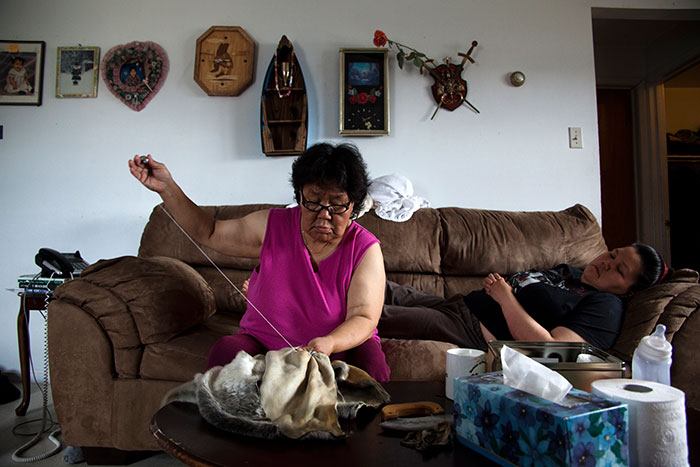
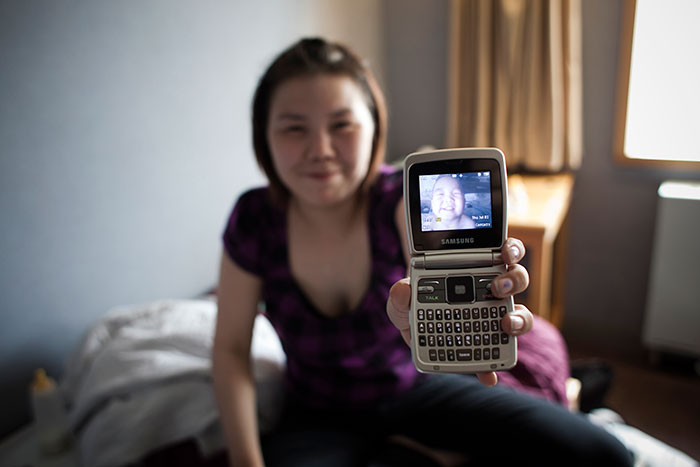
Iqqaumaviit? (Do you remember?)
Traditionally, Inuit women and men occupied a somewhat equal footing within their small, self-governing nomadic groups: women needed men to hunt, fish, and provide food and fur for the family, and men needed women to sew warm, durable, waterproof clothing so they could hunt and fish. But, as cultural anthropologist Tina Minor noted in a 2002 essay, “Political Participation of Inuit Women in the Government of Nunavut,” that structure was undermined in the 1950s, when Inuit moved into permanent settlements. There they met missionaries, police, and government officials—all men—and those men invited Inuit men to join local governing councils. Before you could say “bleeding lung tuberculosis,” a colonial patriarchy was established.
But it never really found purchase. Inuit women, though absent from formal positions of power, remained respected family and community leaders, and continued to shape local society through school committees, health clinics, and churches, as Kautaq did. Slowly, as some men drifted back into hunting and the cost of northern living climbed, more women joined the wage economy and started dabbling in local politics. Health and social issues tended to unite these women, Minor says, adding that the men she interviewed welcomed the opportunity to incorporate women’s views and ideas into policy making. But, while the contemporary economy began to reflect a gender balance, fundamental barriers continued to exclude women from elite politics, namely a severe daycare shortage, a fierce commitment to family, and a desire to stay in their home communities. Everyone seemed to agree that more women politicians were needed, especially as Nunavut’s founding approached, but no one knew what to do about it.
In the mid-’90s, members of the Nunavut Implementation Commission—a federally appointed, mostly Inuit body tasked with helping to sever Nunavut from the Northwest Territories—suggested a radical solution: a law to establish gender parity in the new Nunavut Legislative Assembly. According to the proposal, voters would choose two candidates on election day, one from a list of female candidates and one from a list of males, giving each constituency two representatives and ensuring that the legislature was always gender neutral. Some saw an opportunity to build a modern system based on Inuit values. Opponents called it a contrived social experiment that would dilute the quality of government. It would have been unique in the world if the plebiscite had passed in 1997, but it didn’t. Only 38 percent of Nunavummiut voted, and 57 percent said no.
Gender parity sprang to mind after the 2008 election, when Aariak looked around the artful, igloo-themed, sealskin-lined legislature and saw all those men looking back, but there were so many other things to do.
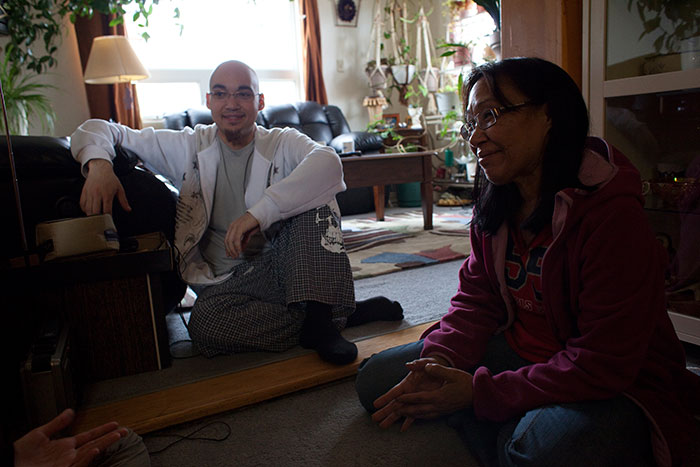
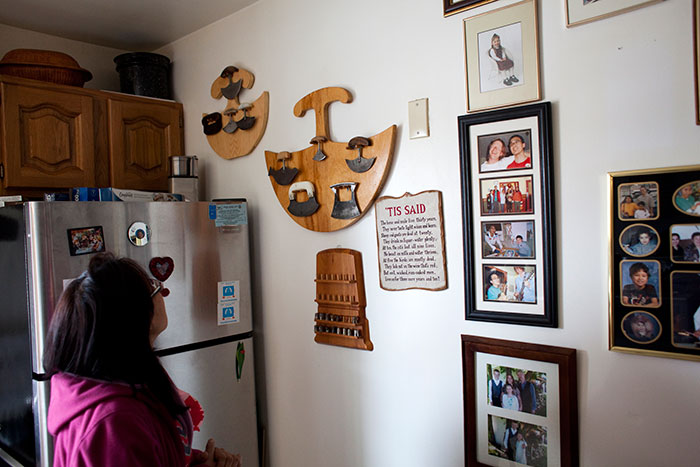
Tupirviga aasivalialuk (My tent site has many spiders)
Jari Aariak is wearing a Jason Spezza hockey jersey and pushing a shopping cart through Iqaluit’s massive Northmart grocery store, with his mother trailing behind in black jeans and sneakers.
“Hello, Premier!” says a man near the $30 watermelons.
“Hi, Bob. I haven’t seen you in a while. Have you been away? ”
She grabs a container of prewashed salad greens, a few vegetables, dip, crackers, pâté, apple juice. People mostly leave her alone when she’s shopping, or else greet her and move on. After paying, we pile into her dusty SUV, with Karliin up front holding James Aliguq on her lap, and me, Jari, and Shawn’s three-year-old daughter in the back. Aariak insists that the little one put on a seat belt, though the rest of us are beltless, standard procedure on the frontier, where dirt roads make for slow driving.
At home, she starts preparing food for a family dinner at her camp tonight. The World Cup final between Spain and the Netherlands buzzes via satellite on the big screen TV. She chops celery and onion, crushes stale bread for crumbs, fries it all in a pan with salt, lemon pepper, and parsley, and then stuffs it inside two large Arctic char before wrapping them in foil and popping them in the oven. She needs a colander on a high shelf, so she grabs a long barbecue fork, steps on a folding stool, and, stretching on tiptoe, deftly spears the colander to lift it up and out. No problem.
Talk turns to our shared love of music. She has a blanket on her couch from the Montreal Jazz Festival—“We stayed downtown; it was amazing.” She stood in line for an autograph from Zimbabwean musician Oliver Mtukudzi at the Ottawa Bluesfest a few years ago—“He was really tall.” While in Greenland last summer, she had her picture taken with Inuk folkie Rasmus Lyberth—“I’ve been a fan since I was a teenager.” But she might just trade all those encounters to meet the ultimate, Neil Diamond—“I love every one of his songs.” Music and art are potent therapy, she says: “They lighten the soul.” But when music doesn’t cut it, she turns to the tranquilizing hush of this blunt land, which is where we’re off to now.
“Jari!” she calls. “Put on something warm. It’s going to be cool out there.” He dons a thin windbreaker, I grab extra socks and fleece, and we depart, loaded with supplies. I try to imagine Alberta premier Ed Stelmach inviting me, a relative stranger, to a gourmet picnic at his tent site with no handlers to chaperone us. I can’t. People keep telling me Aariak’s most distinguishing feature is her composure, but I’m starting to think it’s courage. We drive the rutted road into Sylvia Grinnell Territorial Park, leave the car by the roadside, and scramble over purple dwarf fireweed and bell-flowered Arctic heather to a ridge. A bumpy carpet of grey-green lichen and brown gravel sinks into the wide river below, which runs like an iron cable to Frobisher Bay. “I feel like I’m home here,” she says, inhaling through her nose. “This is me—the quietness of it and the peacefulness, the beauty of this exact spot.”
It’s too chilly to eat outside, so before our guests arrive we wrestle a sheet of pressed wood around the tent’s centre pole and onto a portable mattress frame for people to sit on. While spreading a blanket over top, Aariak suddenly freezes. “I see lots of things I don’t particularly like or need,” she says gravely. I kneel on the board, peer over the side, and spot a dead bumblebee; a small, iridescent beetle skittering for cover; and a cagey grey wolf spider.
“Let me take care of it, Premier,” I declare. She hands me a roll of toilet paper and grimaces. “Here, use as much as you need.”
Bugs disposed of, we unpack candles and dishes. Aariak opens her cooler and extracts a near-empty bottle of Cabernet Franc from last weekend. “Look at this! We can’t even finish a bottle of wine anymore. I must be getting old.” She places her BlackBerry on a shelf beside her, in defiance of the park’s Inuktitut name—Mirnguiqsirvik—which means “place where you do no work,” then covers the cooler in a tea towel and sets out the appetizers. Women and children arrive, Karliin among them, this time with her precocious four-year-old, Tasiana Kautaq. Because Tasiana carries Aariak’s mother’s name, everyone calls her ningiuk, which means “grandmother.” She calls Aariak anaanatsiaq, which also means “grandmother.” This is very confusing, but only for me. Inuit are always incorporating the past into the present, in this case hoping a hammer can help build the future.
Six women sit in a small circle, sipping wine and doffing layers while the children rollick outside. We talk about qikturiaq (mosquitoes), and quinak, that ticklish feeling of bugs on the skin that Inuit cannot abide. There is a collective shudder. I try to be useful by whacking the bugs that have gathered on the tent ceiling, but it sends everyone dashing for cover. I sit down, embarrassed. No one likes a show-off.
After filling up on char and salad, I slip to the rear of the tent, and they slip into Inuktitut. It gets louder, more animated. Inuktitut can be intimidating to non-speakers—all those long, congested words, never intended to be written but only spoken or sung; sensuous words that pop on the lips and tongue, tumble into throaty g’s and q’s, and express full sentences like ilinniatuinnaqtunga (“I’m only just learning”), which could describe anyone from a child to a writer, a premier or the people she governs.
This appeared in the January/February 2011 issue.

